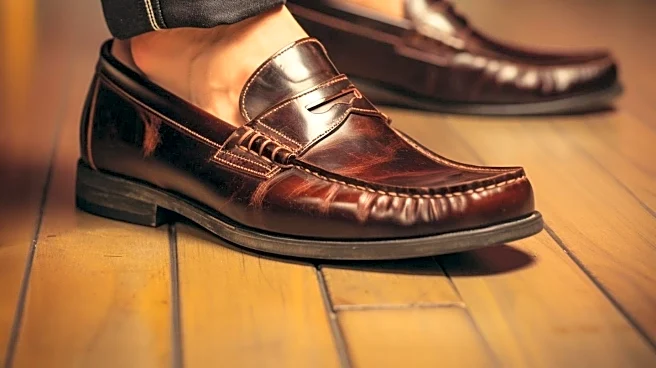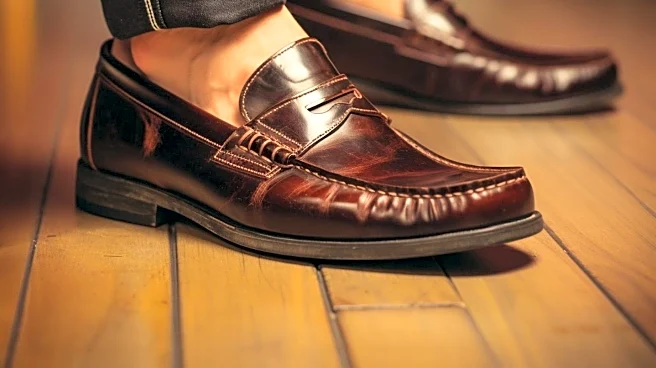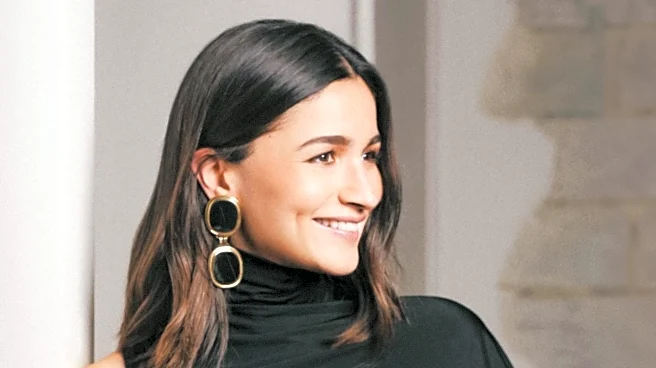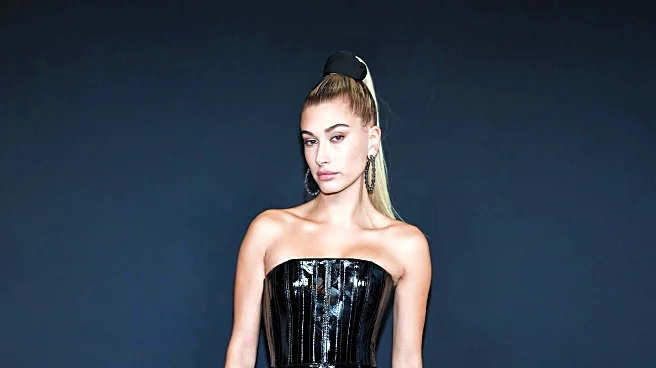What's Happening?
A mother, Elle M Drew, recently shared her experience of trying to assist her 9-year-old daughter in adopting Y2K fashion trends, which have seen a resurgence among younger generations. Drew, who was a teenager
during the original Y2K era, found herself at odds with her daughter's interpretation of the style. Despite Drew's firsthand experience with the fashion of the early 2000s, her daughter expressed frustration, claiming Drew lacked understanding of the current Y2K fashion. This generational disconnect has sparked a broader conversation online, with many millennials sharing similar experiences and reminiscing about iconic trends such as mini dresses over jeans and lace-trimmed tank tops. The revival of brands like Von Dutch and Ed Hardy, along with the popularity of baggy jeans among Gen Z, highlights the cyclical nature of fashion trends.
Why It's Important?
The resurgence of Y2K fashion underscores the cyclical nature of fashion and the influence of generational perspectives on style. As younger generations reinterpret past trends, they contribute to a dynamic fashion landscape that blends nostalgia with contemporary sensibilities. This phenomenon reflects broader societal shifts towards inclusivity and self-expression, as individuals seek to define their identities through fashion. The debate between millennials and Gen Z over the authenticity of Y2K fashion highlights the evolving nature of cultural memory and the role of fashion as a medium for intergenerational dialogue. Brands that were once popular are experiencing renewed interest, potentially impacting the fashion industry by driving demand for retro styles and influencing future design directions.
What's Next?
As Y2K fashion continues to gain popularity, it is likely that more brands will capitalize on this trend by reintroducing vintage styles and collaborating with influencers to reach younger audiences. The fashion industry may see increased innovation as designers seek to blend nostalgic elements with modern aesthetics, catering to the diverse preferences of today's consumers. Additionally, the ongoing conversation between generations about fashion could lead to greater understanding and appreciation of different cultural eras, fostering a more inclusive and diverse fashion community. Retailers and marketers may also adjust their strategies to appeal to the growing interest in retro fashion, potentially influencing advertising and product development.
Beyond the Headlines
The revival of Y2K fashion not only reflects changing style preferences but also highlights deeper cultural dynamics, such as the impact of social media on fashion trends and the role of nostalgia in shaping consumer behavior. As younger generations embrace styles from the past, they are also redefining traditional gender norms and challenging the boundaries of fashion. This movement towards genderless and age-inclusive fashion represents a broader societal shift towards diversity and acceptance, encouraging individuals to express themselves freely without conforming to conventional standards. The interplay between past and present fashion trends offers insights into the evolving nature of cultural identity and the power of fashion as a tool for social change.











